Abstract
OBJECTIVE: To determine which host characteristics are risk factors for cutaneous malignant melanoma in order to aim prevention and early detection programs at people at high risk. DESIGN: Case-control study. SETTING: Southern Ontario. SUBJECTS: The 583 case subjects were aged 20 to 69 years and had had malignant melanoma newly diagnosed between Oct. 1, 1984, and Sept. 30, 1986. The 608 control subjects were randomly selected from a list of residents in the study area and were stratum matched for age, sex and municipality. INTERVENTION: Through in-person interviews the interviewer ascertained exposure to putative external risk factors and assessed skin colour and number of nevi on the arm, and the subject reported his or her natural hair colour at age 20 years, eye colour, skin reaction to repeated sun exposure, and freckle and whole-body nevus densities. RESULTS: Although all the host factors mentioned were significantly associated with melanoma risk when considered separately, only hair colour, skin reaction to repeated sun exposure, and self-reported freckle and nevus densities remained significant after backward logistic regression analysis. The odds ratio for melanoma was estimated to be 10.7 in people who had many nevi compared with those who had none (95% confidence interval [CI] 6.6 to 17.4), 4.0 in people who had red hair compared with those who had black hair (95% CI 1.9 to 8.2), 1.9 in people who had many freckles compared with those who had none or few (95% CI 1.3 to 2.8) and 1.4 respectively in people who burned and had a subsequent increase in tan and those who burned and had no increase in tan after repeated sun exposure compared with those who did not burn [corrected]. CONCLUSIONS: Four risk factors for malignant melanoma have been identified. Prospective evaluation of their predictive value should be done. In the meantime, however, these factors should be used to identify people apparently at high risk for malignant melanoma, who can then be targeted for early detection and prevention programs.
Full text
PDF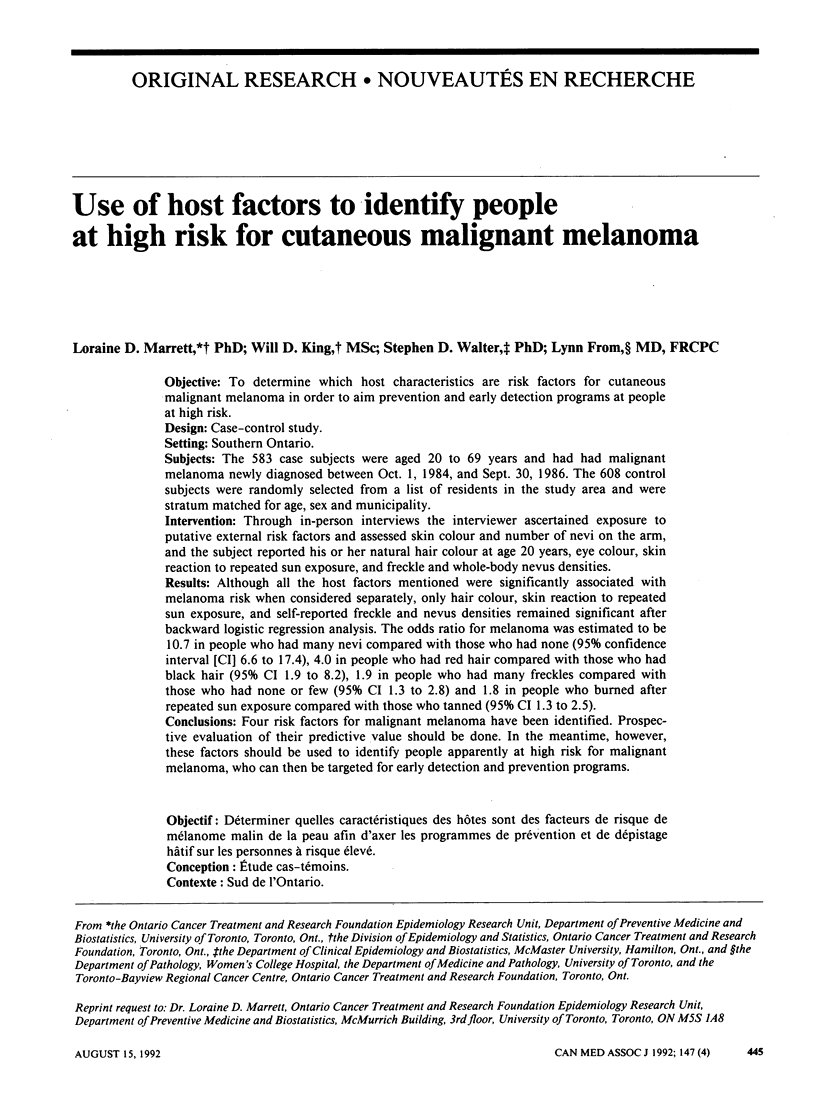
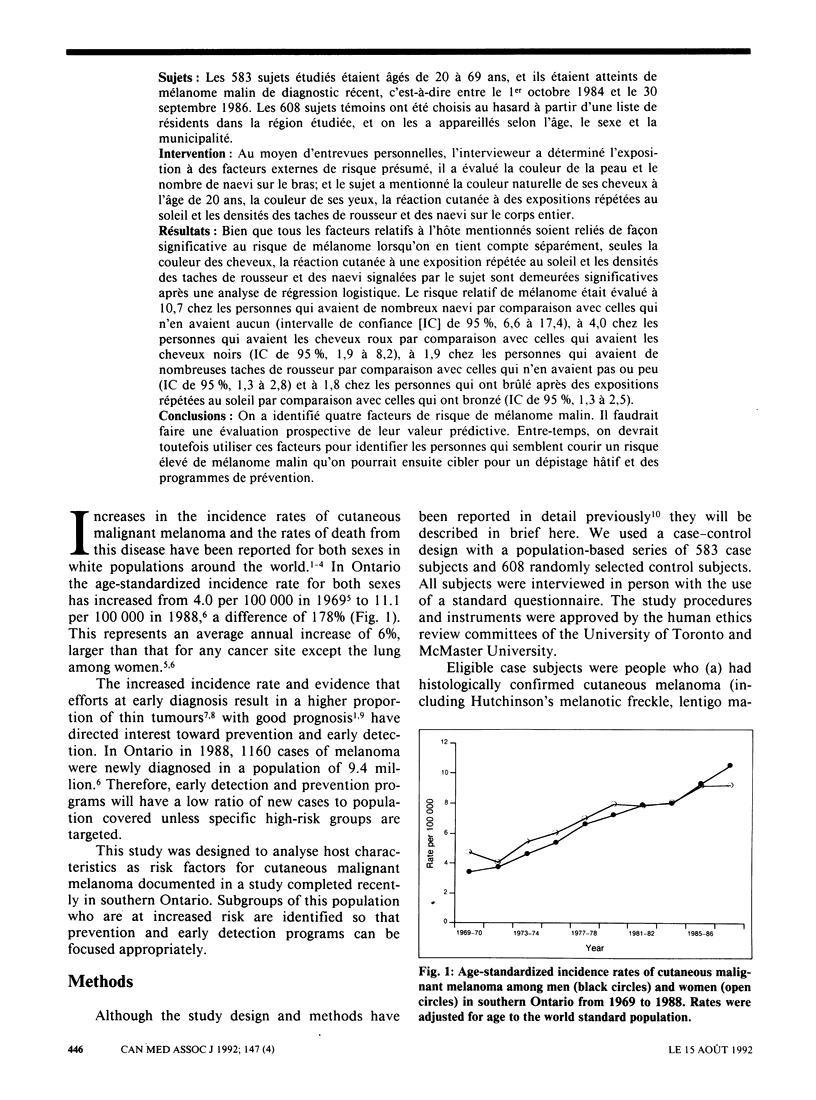
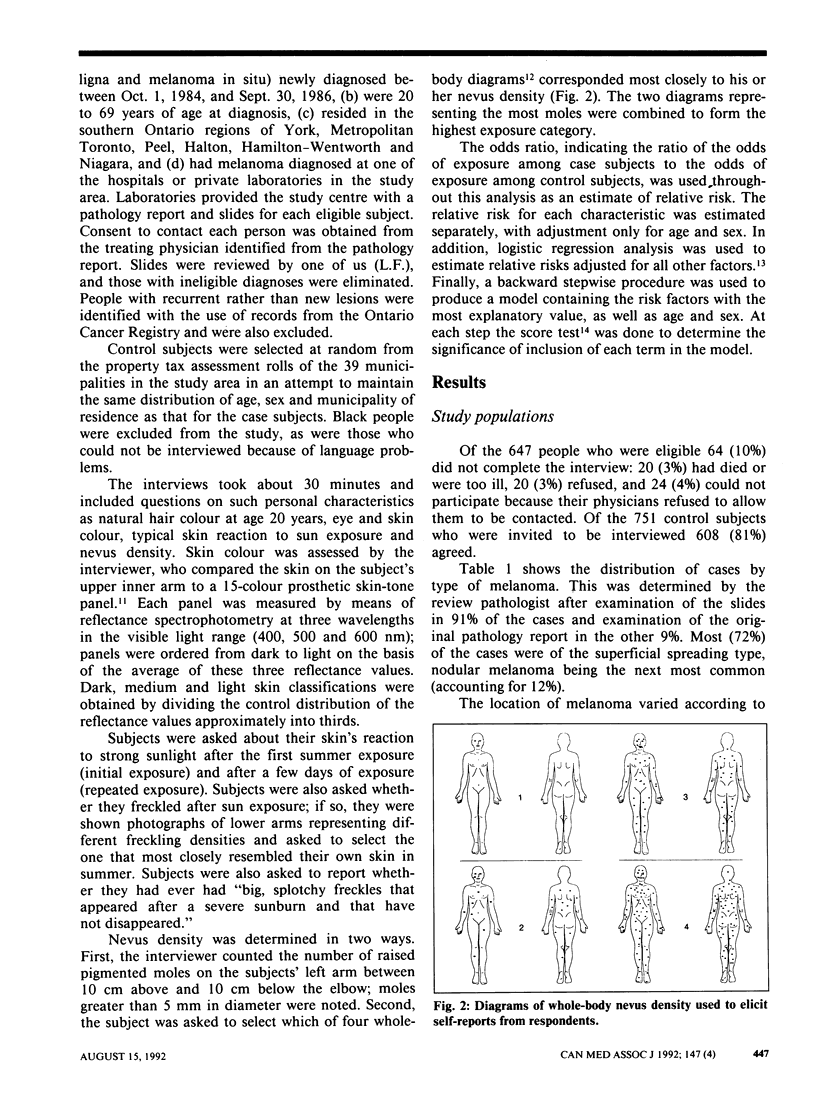

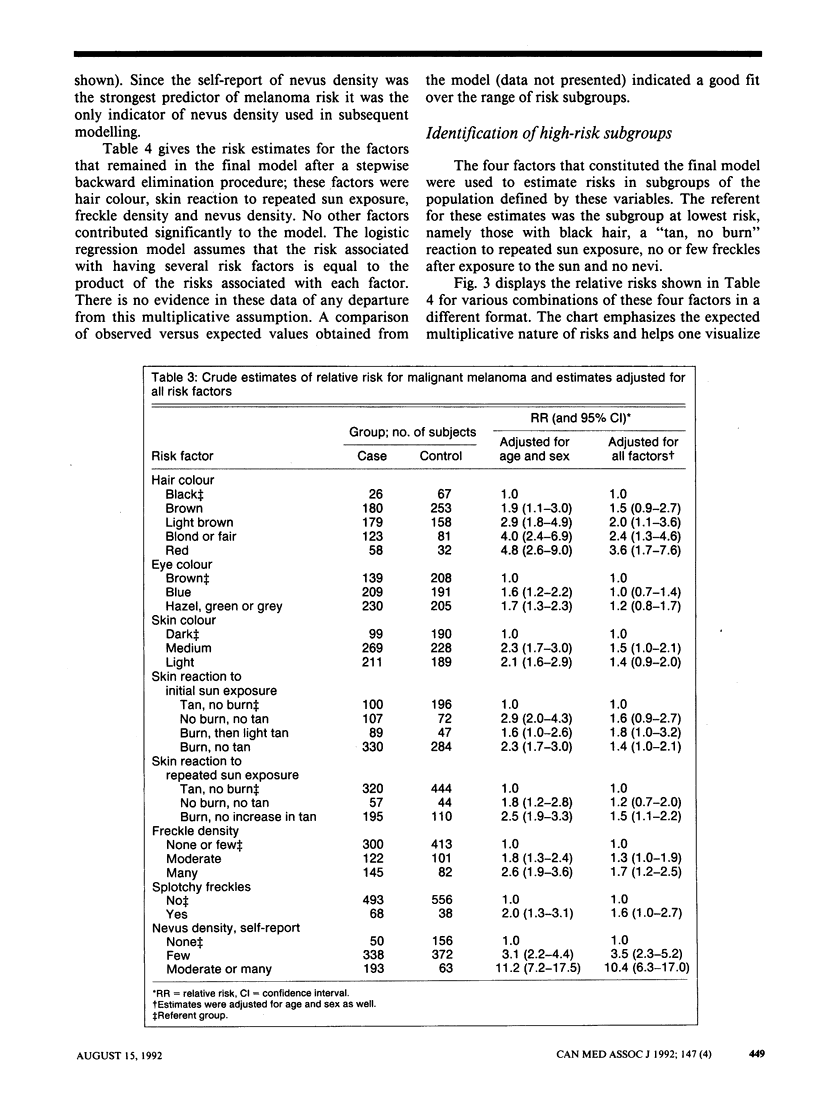
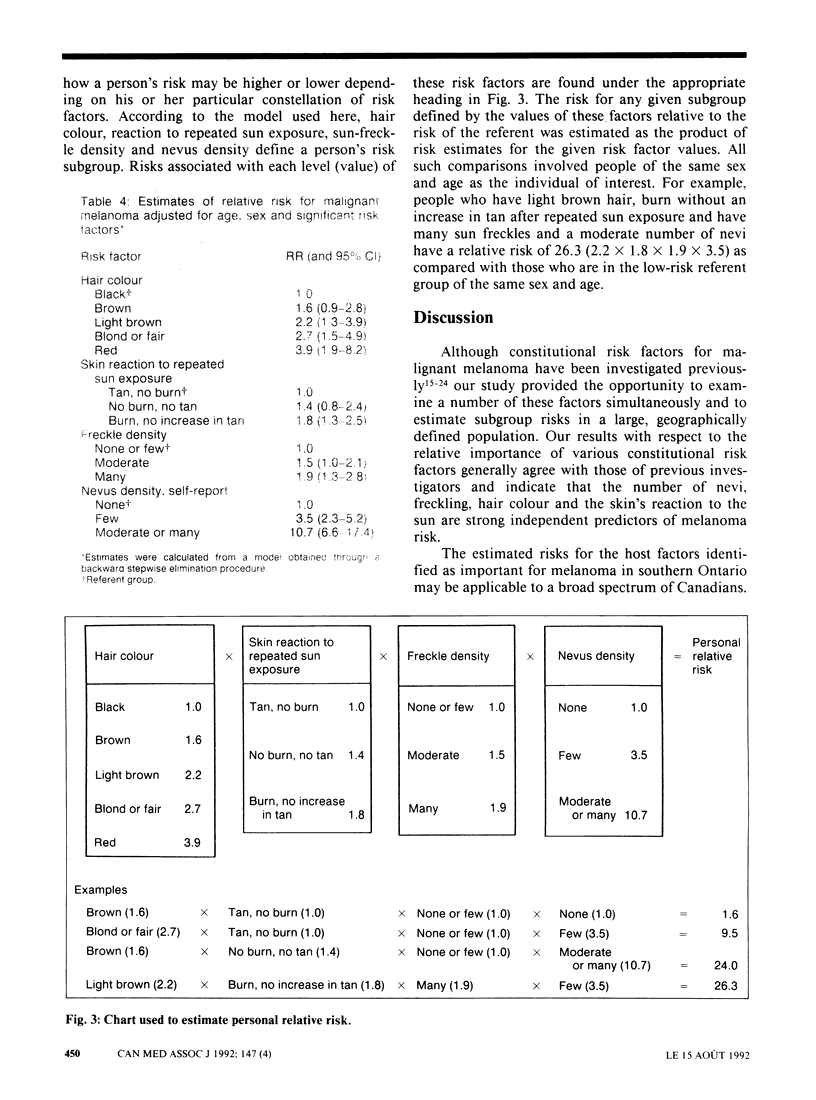
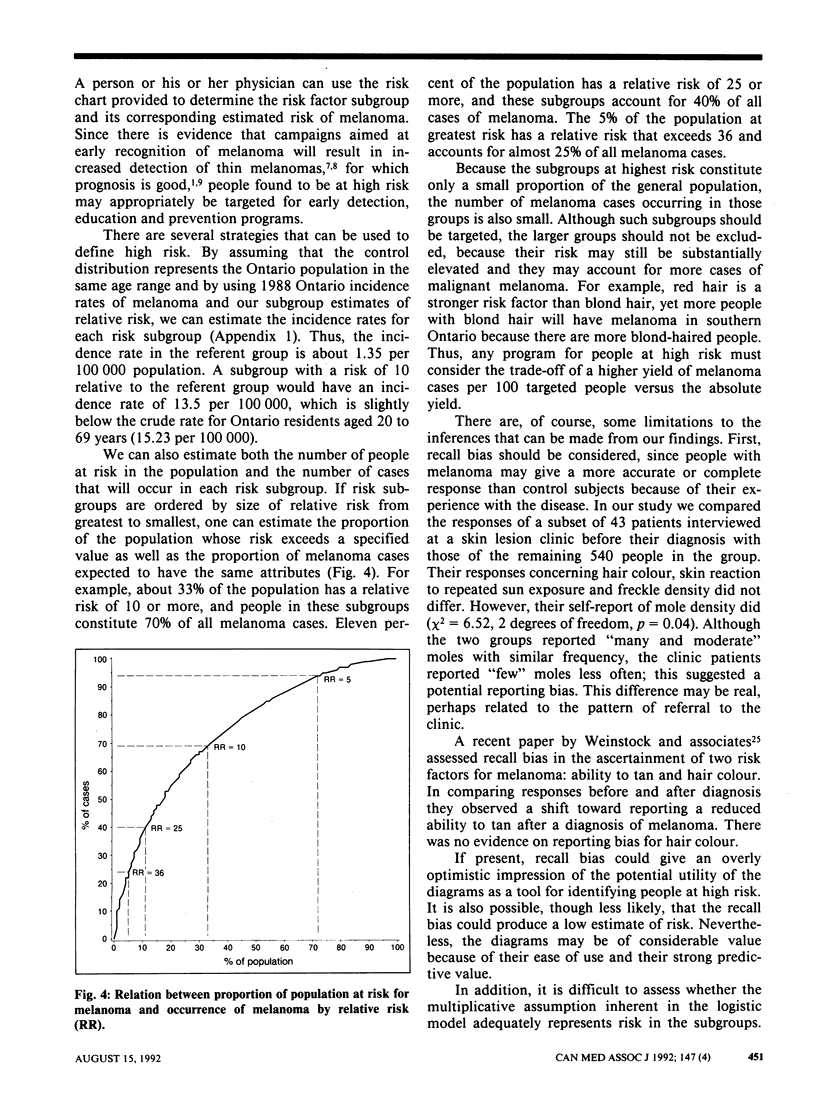
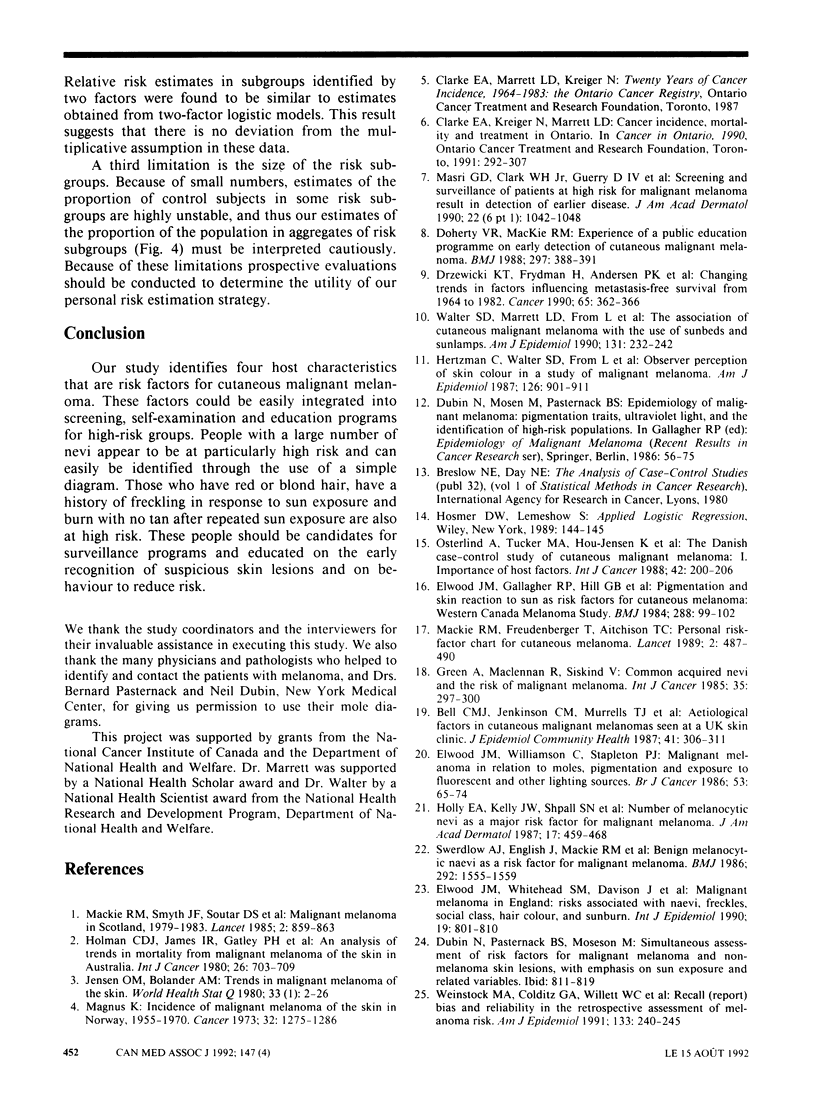
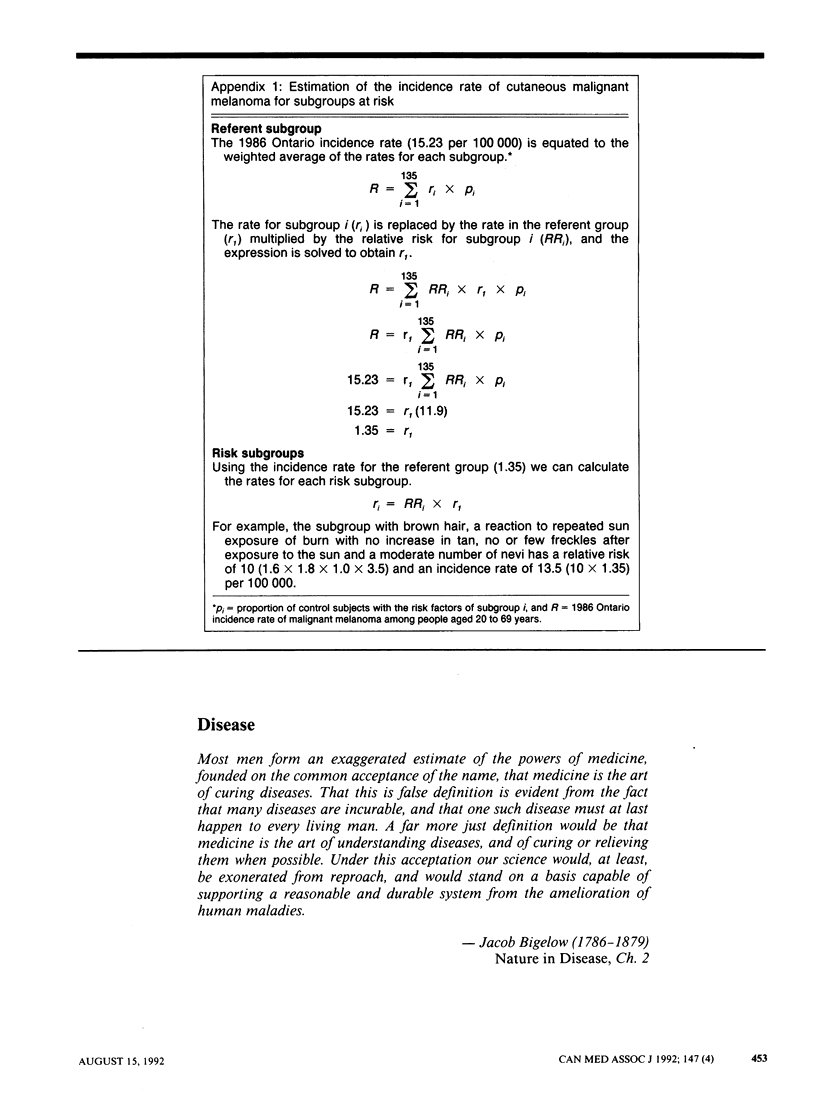
Selected References
These references are in PubMed. This may not be the complete list of references from this article.
- Bell C. M., Jenkinson C. M., Murrells T. J., Skeet R. G., Everall J. D. Aetiological factors in cutaneous malignant melanomas seen at a UK skin clinic. J Epidemiol Community Health. 1987 Dec;41(4):306–311. doi: 10.1136/jech.41.4.306. [DOI] [PMC free article] [PubMed] [Google Scholar]
- Doherty V. R., MacKie R. M. Experience of a public education programme on early detection of cutaneous malignant melanoma. BMJ. 1988 Aug 6;297(6645):388–391. doi: 10.1136/bmj.297.6645.388. [DOI] [PMC free article] [PubMed] [Google Scholar]
- Drzewiecki K. T., Frydman H., Andersen K., Poulsen H., Ladefoged C., Vibe P. Malignant melanoma. Changing trends in factors influencing metastasis-free survival from 1964 to 1982. Cancer. 1990 Jan 15;65(2):362–366. doi: 10.1002/1097-0142(19900115)65:2<362::aid-cncr2820650231>3.0.co;2-e. [DOI] [PubMed] [Google Scholar]
- Dubin N., Moseson M., Pasternack B. S. Epidemiology of malignant melanoma: pigmentary traits, ultraviolet radiation, and the identification of high-risk populations. Recent Results Cancer Res. 1986;102:56–75. doi: 10.1007/978-3-642-82641-2_5. [DOI] [PubMed] [Google Scholar]
- Elwood J. M., Gallagher R. P., Hill G. B., Spinelli J. J., Pearson J. C., Threlfall W. Pigmentation and skin reaction to sun as risk factors for cutaneous melanoma: Western Canada Melanoma Study. Br Med J (Clin Res Ed) 1984 Jan 14;288(6411):99–102. doi: 10.1136/bmj.288.6411.99. [DOI] [PMC free article] [PubMed] [Google Scholar]
- Elwood J. M., Whitehead S. M., Davison J., Stewart M., Galt M. Malignant melanoma in England: risks associated with naevi, freckles, social class, hair colour, and sunburn. Int J Epidemiol. 1990 Dec;19(4):801–810. doi: 10.1093/ije/19.4.801. [DOI] [PubMed] [Google Scholar]
- Elwood J. M., Williamson C., Stapleton P. J. Malignant melanoma in relation to moles, pigmentation, and exposure to fluorescent and other lighting sources. Br J Cancer. 1986 Jan;53(1):65–74. doi: 10.1038/bjc.1986.10. [DOI] [PMC free article] [PubMed] [Google Scholar]
- Green A., MacLennan R., Siskind V. Common acquired naevi and the risk of malignant melanoma. Int J Cancer. 1985 Mar 15;35(3):297–300. doi: 10.1002/ijc.2910350303. [DOI] [PubMed] [Google Scholar]
- Hertzman C., Walter S. D., From L., Alison A. Observer perception of skin color in a study of malignant melanoma. Am J Epidemiol. 1987 Nov;126(5):901–911. doi: 10.1093/oxfordjournals.aje.a114727. [DOI] [PubMed] [Google Scholar]
- Holly E. A., Kelly J. W., Shpall S. N., Chiu S. H. Number of melanocytic nevi as a major risk factor for malignant melanoma. J Am Acad Dermatol. 1987 Sep;17(3):459–468. doi: 10.1016/s0190-9622(87)70230-8. [DOI] [PubMed] [Google Scholar]
- Holman C. D., James I. R., Gattey P. H., Armstrong B. K. An analysis of trends in mortality from malignant melanoma of the skin in Australia. Int J Cancer. 1980 Dec 15;26(6):703–709. doi: 10.1002/ijc.2910260602. [DOI] [PubMed] [Google Scholar]
- Jensen O. M., Bolander A. M. Trends in malignant melanoma of the skin. World Health Stat Q. 1980;33(1):2–26. [PubMed] [Google Scholar]
- MacKie R. M., Freudenberger T., Aitchison T. C. Personal risk-factor chart for cutaneous melanoma. Lancet. 1989 Aug 26;2(8661):487–490. doi: 10.1016/s0140-6736(89)92097-7. [DOI] [PubMed] [Google Scholar]
- MacKie R. M., Smyth J. F., Soutar D. S., Calman K. C., Watson A. C., Hunter J. A., McLaren K. M., MacGillivray J. B., McPhie J. L., Rankin R. Malignant melanoma in Scotland 1979-1983. Lancet. 1985 Oct 19;2(8460):859–863. doi: 10.1016/s0140-6736(85)90126-6. [DOI] [PubMed] [Google Scholar]
- Magnus K. Incidence of malignant melanoma of the skin in Norway, 1955-1970. Variations in time and space and solar radiation. Cancer. 1973 Nov;32(5):1275–1286. doi: 10.1002/1097-0142(197311)32:5<1275::aid-cncr2820320537>3.0.co;2-8. [DOI] [PubMed] [Google Scholar]
- Masri G. D., Clark W. H., Jr, Guerry D., 4th, Halpern A., Thompson C. J., Elder D. E. Screening and surveillance of patients at high risk for malignant melanoma result in detection of earlier disease. J Am Acad Dermatol. 1990 Jun;22(6 Pt 1):1042–1048. doi: 10.1016/0190-9622(90)70149-c. [DOI] [PubMed] [Google Scholar]
- Osterlind A., Tucker M. A., Hou-Jensen K., Stone B. J., Engholm G., Jensen O. M. The Danish case-control study of cutaneous malignant melanoma. I. Importance of host factors. Int J Cancer. 1988 Aug 15;42(2):200–206. doi: 10.1002/ijc.2910420210. [DOI] [PubMed] [Google Scholar]
- Swerdlow A. J., English J., MacKie R. M., O'Doherty C. J., Hunter J. A., Clark J., Hole D. J. Benign melanocytic naevi as a risk factor for malignant melanoma. Br Med J (Clin Res Ed) 1986 Jun 14;292(6535):1555–1559. doi: 10.1136/bmj.292.6535.1555. [DOI] [PMC free article] [PubMed] [Google Scholar]
- Walter S. D., Marrett L. D., From L., Hertzman C., Shannon H. S., Roy P. The association of cutaneous malignant melanoma with the use of sunbeds and sunlamps. Am J Epidemiol. 1990 Feb;131(2):232–243. doi: 10.1093/oxfordjournals.aje.a115493. [DOI] [PubMed] [Google Scholar]
- Weinstock M. A., Colditz G. A., Willett W. C., Stampfer M. J., Rosner B., Speizer F. E. Recall (report) bias and reliability in the retrospective assessment of melanoma risk. Am J Epidemiol. 1991 Feb 1;133(3):240–245. doi: 10.1093/oxfordjournals.aje.a115868. [DOI] [PubMed] [Google Scholar]


